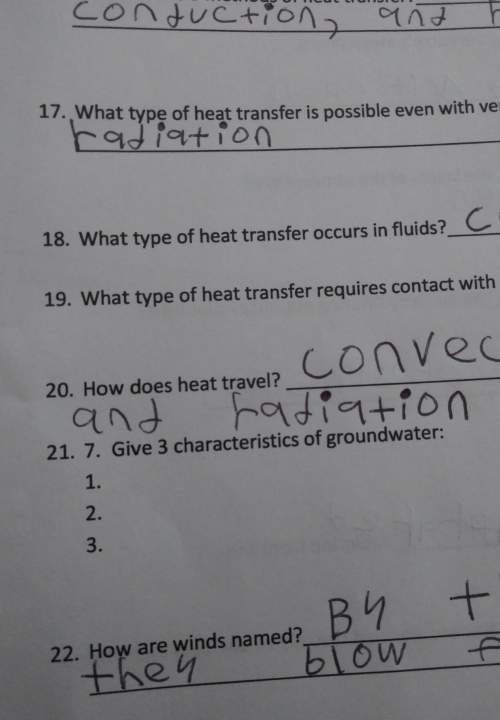
Physics, 09.02.2021 01:00 jermainedwards
Physics MIDTERM Original Elaboration 2021
ASSESSING PHYSICAL PHENOMENA BY USING MATHEMATICAL METHODS
Learning Objective: Model natural processes through basic Laws-of-Motion
Translating between the (concrete) physical principles and (abstract) mathematical representations.
Lesson Goal: Create and interpret instances of “real-life” MECHANICS that demonstrates or reveals understanding.
Make predictions using uniform forces, correctly RESOLVED as vectors, and inertia.
Directions You will invent scenarios for the three situations shown (idealized) here:
1. ACCELERATION & PROJECTILES §§ 2.1, 3.2 & 5.3 A freely falling mass m is initially at height yi, moving horizontally at vx [There is only one GRAVITY FORCE, ‒ mg: Its path is a parabola]
2. FORCS & LAWS-OF-MOTION §§ 4.2 &4.3 A mass m is being PUSHED along a flat (level) surface, with kinetic coefficient-of-friction μK [There are two opposing forces: constant PUSHING FORCE and FRICTION = ‒ μFN, with NORMAL FORCE = mg]
Let the mass start initially at rest and then (suddenly) be released when it reaches velocity vxi.
Criteria
A Make the story about events “realistically” encountered: What is hurling? Who is pushing what? [Try imagining interesting “characters and situations”!]
Choose definite mass, horizontal velocity and (if needed) height or friction-coefficient values, which may be different for the problems!
B List the meanings of all symbols, both chosen and calculated; fully write the scenario and solutions using this appropriate vocabulary. Also , usage should show understanding of “real-life” context!
C Using Dynamics=> Make a Free-Body Diagram labeling all forces involved and write the ∑F = ma equations. Calculate all named (or symbolized) forces in the Diagram.
D Using Kinematics=> Solve both situations for acceleration.
[NOTES: For Problem #1, there is no air-resistance. Problem #2 has two stages]
Case #1 Find how much time elapses and the horizontal displacement until the mass lands, yf = 0.
Case #2 Find how much time elapses and the horizontal displacement until the mass gets released at vxi .
Find how much time elapses and the horizontal displacement until the mass (released at vxi) stops.
E Inquiry Use kinematics, dynamics or “common sense” but very clearly state your reasoning:
(a) All falling objects, through an empty vacuum, will fall at the same acceleration g. However, why might it make sense that any object subject FRICTION will also have the same acceleration, regardless of mass?
(b) When GRAVITY stops objects, this is a turning-point; when FRICTION stops objects, they just remain at rest.
How does the way GRAVITY and FRICTION affect motion when objects reverse direction explain this?

Answers: 2


Another question on Physics

Physics, 22.06.2019 01:30
In a thunderstorm, charge builds up on the water droplets or ice crystals in a cloud. thus, the charge can be considered to be distributed uniformly throughout the cloud. for the purposes of this problem, take the cloud to be a sphere of diameter 1.00 kilometer. the point of this problem is to estimate the maximum amount of charge that this cloud can contain, assuming that the charge builds up until the electric field at the surface of the cloud reaches the value at which the surrounding air breaks down. this breakdown means that the air becomes highly ionized, enabling it to conduct the charge from the cloud to the ground or another nearby cloud. the ionized air will then emit light due to the recombination of the electrons and atoms to form excited molecules that radiate light. in addition, the large current will heat up the air, resulting in its rapid expansion. these two phenomena account for the appearance of lightning and the sound of thunder. take the breakdown electric field of air to be eb=3.00ă—106n/c. part a estimate the total charge q on the cloud when the breakdown of the surrounding air is reached. express your answer numerically, to three significant figures, using ďµ0=8.85ă—10â’12c2/(nâ‹…m2) .
Answers: 2

Physics, 22.06.2019 11:50
Select all that applywhat are some basic resources a family is expected to provide for children? educationclothesspending
Answers: 2

Physics, 22.06.2019 15:30
Charge is distributed along the entire x-axis with uniform density λ. how much work does the electric field of this charge distribution do on an electron that moves along the y-axis from y = a to y = b? (use the following as necessary: a, b, ε0, λ, and q for the charge on an electron.)
Answers: 3

Physics, 22.06.2019 18:30
Examples of states of consciousness include a. daydreaming b. dreaming during sleep c. hypnosis d. all of the above
Answers: 2
You know the right answer?
Physics MIDTERM Original Elaboration 2021
ASSESSING PHYSICAL PHENOMENA BY USING MATHEMATICAL METH...
Questions


Mathematics, 07.07.2019 00:30

Social Studies, 07.07.2019 00:30



Mathematics, 07.07.2019 00:30

Physics, 07.07.2019 00:30

History, 07.07.2019 00:30




Mathematics, 07.07.2019 00:30

Mathematics, 07.07.2019 00:30


Biology, 07.07.2019 00:30



History, 07.07.2019 00:30





